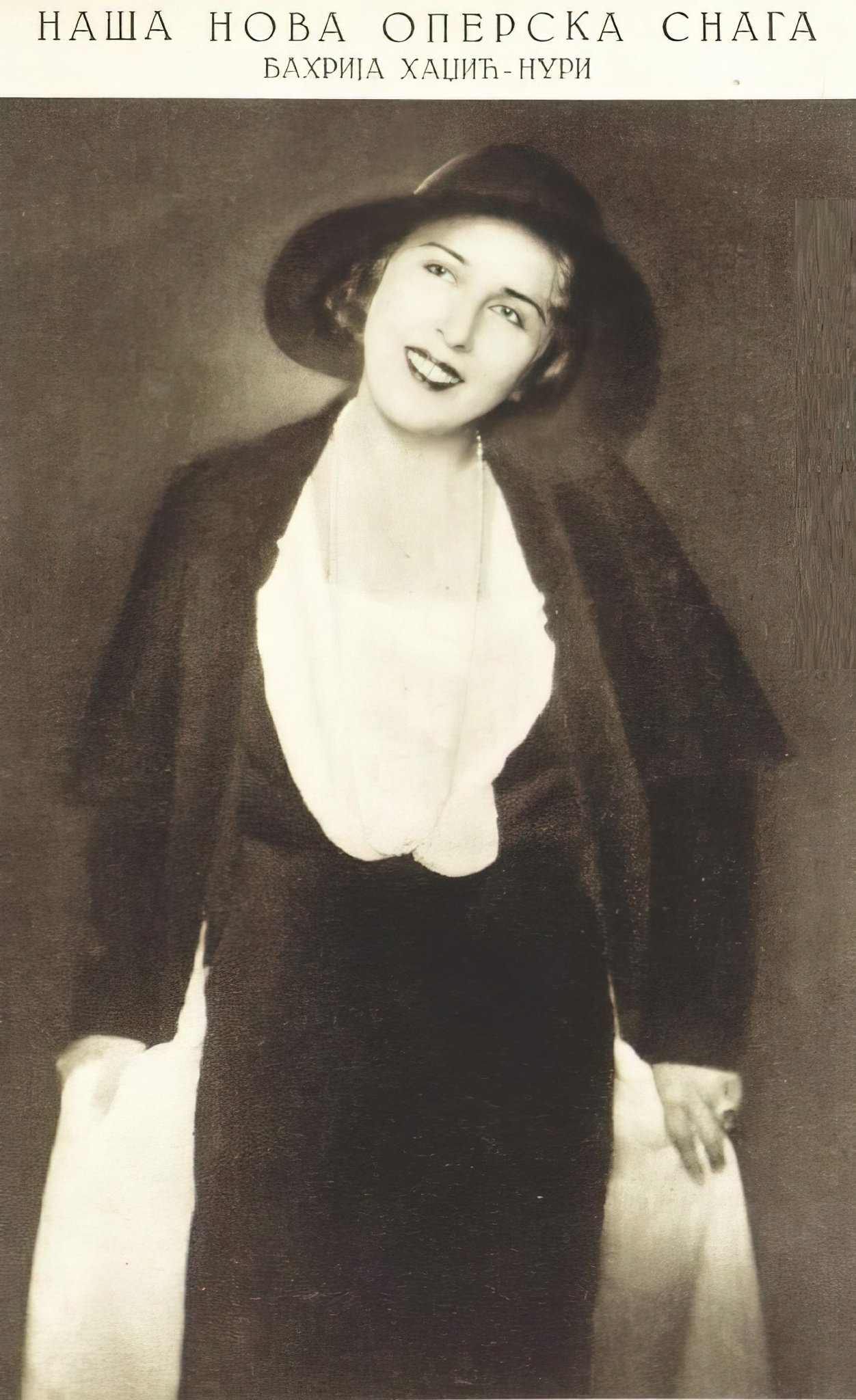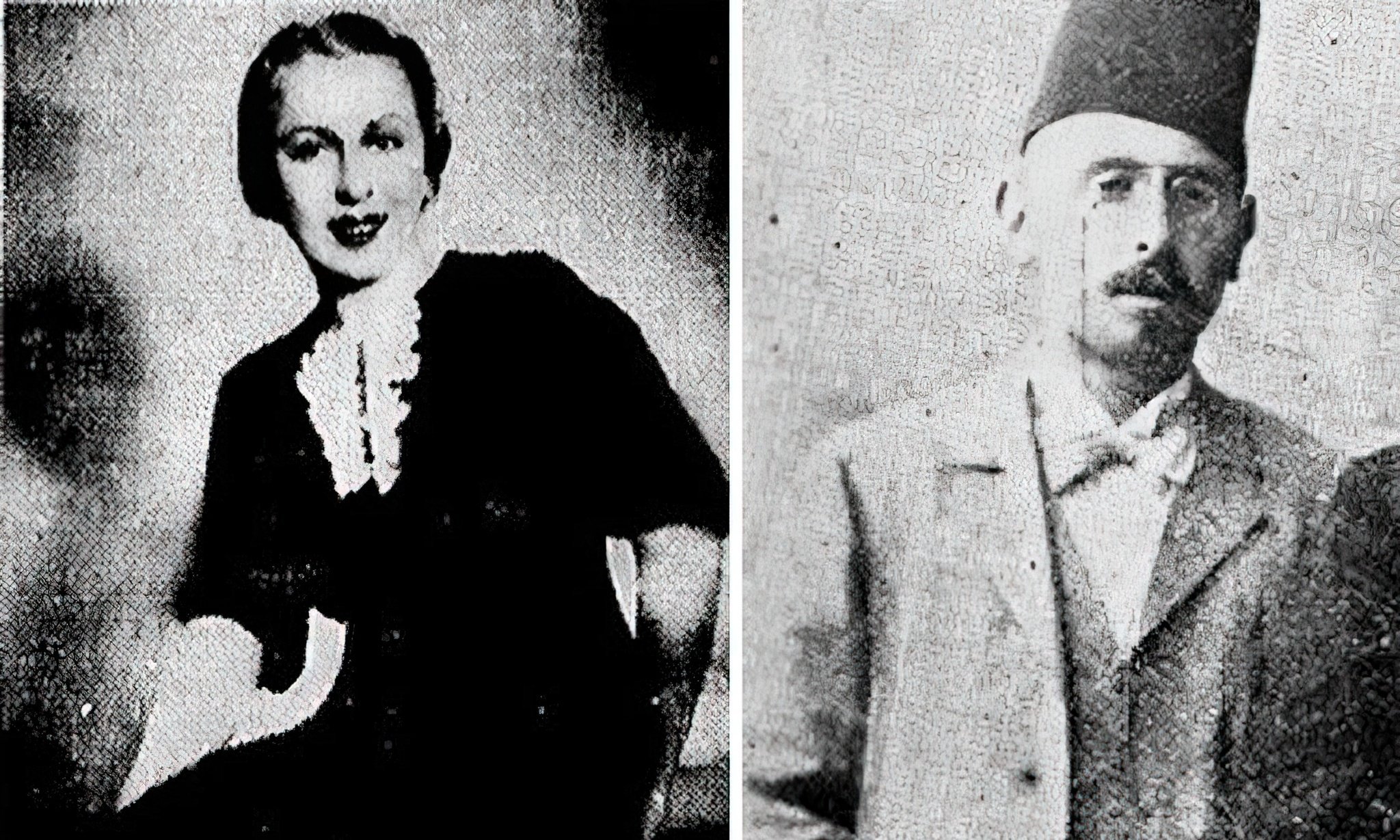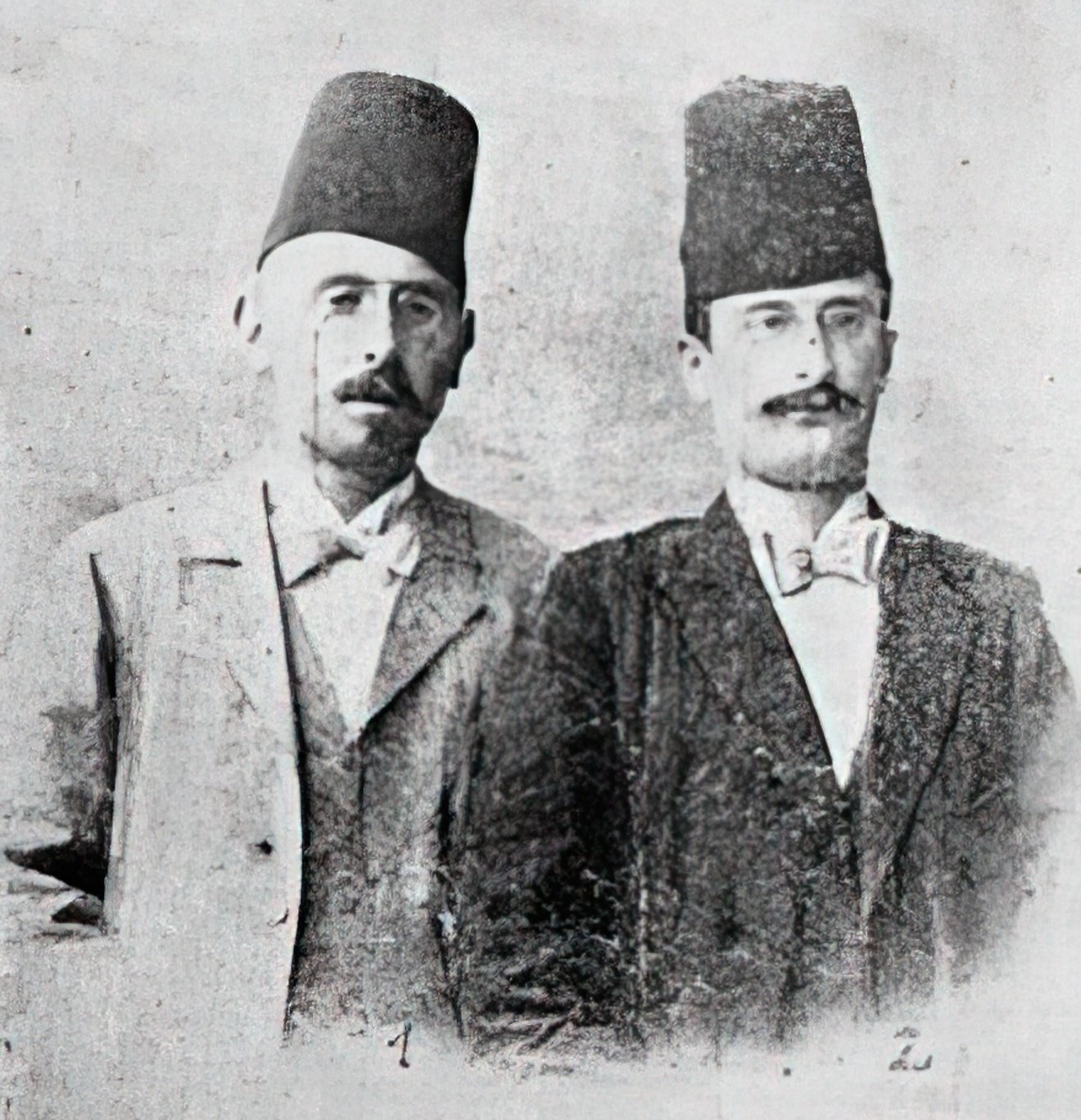
BAHRIJA NURI HADŽIĆ, A DIVA OF EUROPEAN OPERA HOUSES AND STAR OF MUSIC AVANT-GARDE
Author: Prof. Aida Abadžić Hodžić, PhD, Faculty of Philosophy in Sarajevo • Illustration: Bahrija Nuri Hadžić, Beograd

Bahrija Nuri Hadžić was born in 1904, as one of four daughters of Osman Nuri Hadžić, a professor of Sharia and a doctor of secular law, which he studied in Zagreb and Vienna, a member of the State Council of the Kingdom of Serbs, Croats and Slovenes, an editor of journal Behar and a fiction writer. All Osman's daughters had university education, and besides the family intellectual environment, an important role in it was played by scholarships of supporting, educational and cultural societies “Gajretˮ and “Narodna uzdanicaˮ between the two wars. These scholarships were also important as a support to education of the first graduated female physicians, Muslim women from Bosnia and Herzegovina: Ševala Iblizović Zildžić and Hiba Šerbić, who were granted a degree in medicine in Zagreb (Ševala) and in Belgrade (Hiba). Osman's daughters studied at the University of Belgrade: Nadžida worked as a judge juror, Zineta as a court clerk, and Rabija as a teacher.
Their sister Bahrija had the most unusual and quite unique story in the history of music avant-garde among Muslim girls. Besides maktab, she attended a school of music with nuns, and then continued music education in Belgrade. When her exceptional vocal talent was observed, she enrolled in the Academy of Music in Vienna, where she studied in the 1920s, with professor Theo Lierhammer at the State High Academy of Music and Arts.
The outstanding vocal abilities, as well as a rare acting talent in very demanding roles, made Bahrija Nuri Hadžić a famous prima donna in renowned opera houses in Bern, Zürich, Prague and Belgrade. Upon completing studies, she was first permanently engaged by Bern Opera, where she stayed for three years and sang at twenty-three premieres.
Two of her roles were particularly remembered: the role of Lulu in the first performance of opera by Alban Berg in Zürich in 1937 and, two years later, in the same city, the role of Salome in the opera by Richard Strauss. Bahrija's performance of Lulu, one of the most demanding roles in terms of singing and acting in the world opera literature, which can be performed only by an “excelling singer and superior actress with an extremely contemporary sensibility”, was a “first-class cultural event in Europe ˮ (Miletić-Oručević, 2011: 105).
Bahrija in the role of Lulu, Zürich
Two years later, in 1939, again in Zürich, she sang the role of Salome on the occasion of the seventy-fifth birthday of Richard Strauss, and the performance at the ceremony was conducted by the composer himself, who later stated that it was the “Salome whom I have waited for thirty-five years”. This role made her famous. When Lovro Matačić (1899–1985) heard one of these performances, it was recorded that this renowned conductor and composer who conducted at the greatest world opera houses said that Bahrija's singing “is not listened to with the ear but with the spinal cord” (Jergović: 2013).
Self-aware and proud of her origin, it has been recorded that she used to remind, particularly foreign reviewers, not to write about her as about a “cute Turkish girlie“ since she, Mrs. Bahrija Nuri-Hadžić, is a soprano and a Muslim from Mostar (Miletić-Oručević, 2011: 104).
Persuaded by composer and conductor Stevan Hristić she moved to Belgrade, where she retired in 1960 as a principal soloist of Belgrade Opera. “With Bahrija Nuri Hadžić, Belgrade Opera experienced its first finest hours and accomplished some of the greatest achievements in its history,” Mirka Pavlović wrote (Kajan: 2016, 14). Still, her superior music career did not last long, for private reasons. Later roles in the Belgrade National Theatre “were not roles suited to the quality and needs of her voice” (Jergović: 2013).
Although, as a rule, Bahrija's biography includes only European capitals, only few people reminded, as pointed out by Ibrahim Kajan, that the great singer,
“apart from spotlights of glamorous stages of the world, also performed in a modest provincial hall of her native town, in Mostar, in March 1941. She accepted the invitation to participate in a program of the Muslim People's Library. Grateful Mostar citizens greeted her enthusiastically and thanked her with standing ovation. She and the audience understood each other: her world greatness still sprang from the deep, multi-layered sensibilities of Bosnian sheet music …ˮ (Kajan: 2016, 15).
Bahrija lived through almost entire 20th century: in her childhood, the worlds of the East and the West met, and in the year of her death the Old Bridge in the city of her childhood and her father's hometown was destroyed. In the still very vivid forms of life in the tradition of Islamic culture which marked her childhood and upbringing, as well in the openness to positive impulses of modernization which, in the early 20th century, spurred a significant number of Muslim inteligentsia from Bosnia and Herzegovina to gain education at European universities, the dynamic and courageous professional story of Bahrija Nuri Hadžić evolved, a story where a girl from the city of sevdah entered the very heart of European musical and opera avant-garde. The story about Bahrija Nuri Hadžić is a sketch for understanding Bosnia and Herzegovina in its many layers and interweaving of cultural traditions, as well as the need for nourishing the culture of remembrance of significant names which became part of European cultural history and which confirm that Muslims of Bosnia and Herzegovina are integral and active part of European artistic, even avant-garde scene, which is, among others, testified by stories of two contemporaries: Selman Selmanagić (1905–1986) and Bahrija Nuri Hadžić (1904–1993).
Bahrija Nuri Hadžić, Beograd
References:
Miletić-Oručević, Tanja (2011), “Na daskama Kraljevine amnezijeˮ, in: Žene u Bosni i Hercegovini, Dolje ti je rijeka / Dolje ti je pruga (edited by: S. Gavrić and H. Stojić), Buybook, Sarajevo, 100-107.
Pavlović, Milka, “Bahrija Nuri Hadžić, velika evropska primadonaˮ, Most – časopis za obrazovanje, nauku i kulturu, god. XXVI, 140-1, 62-68.
Kajan, Ibrahim, “Bahrija Nuri Hadžić – historija iz zasjedeˮ, Dnevni avaz, Sarajevo, 2.7.2016, 14-15.
Jergović, Miljenko, Bahrija Nuri Hadžić, Ajfelov most, 11.3.2013. (https://www.jergovic.com/ajfelov-most/bahrija-nuri-hadzic/ 25.11.2022.)
Spahić, Aida et al., Zabilježene: žene i javni život Bosne i Hercegovine u 20. vijeku, Sarajevski otvoreni centar: Fondacija CURE, 2015.



